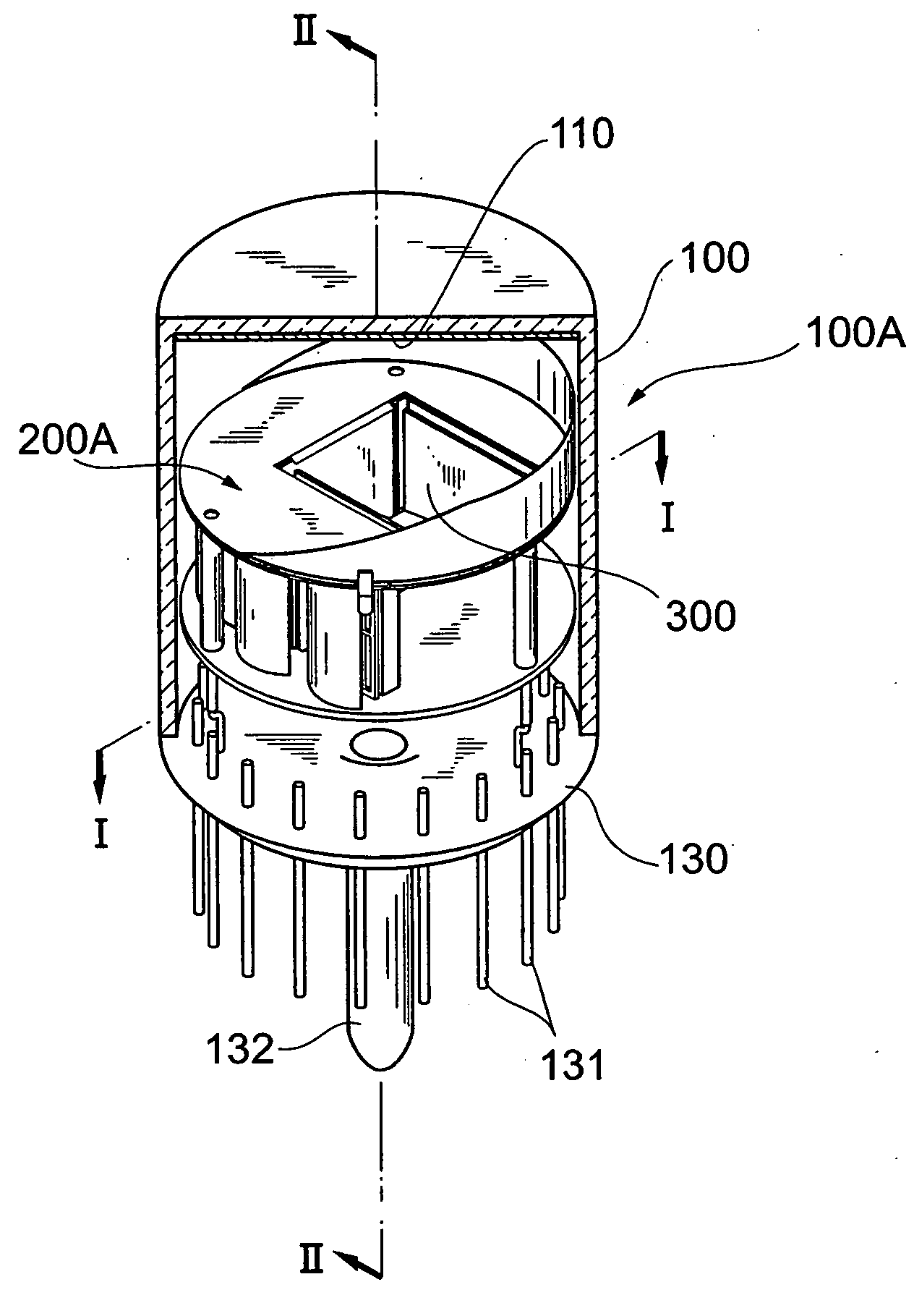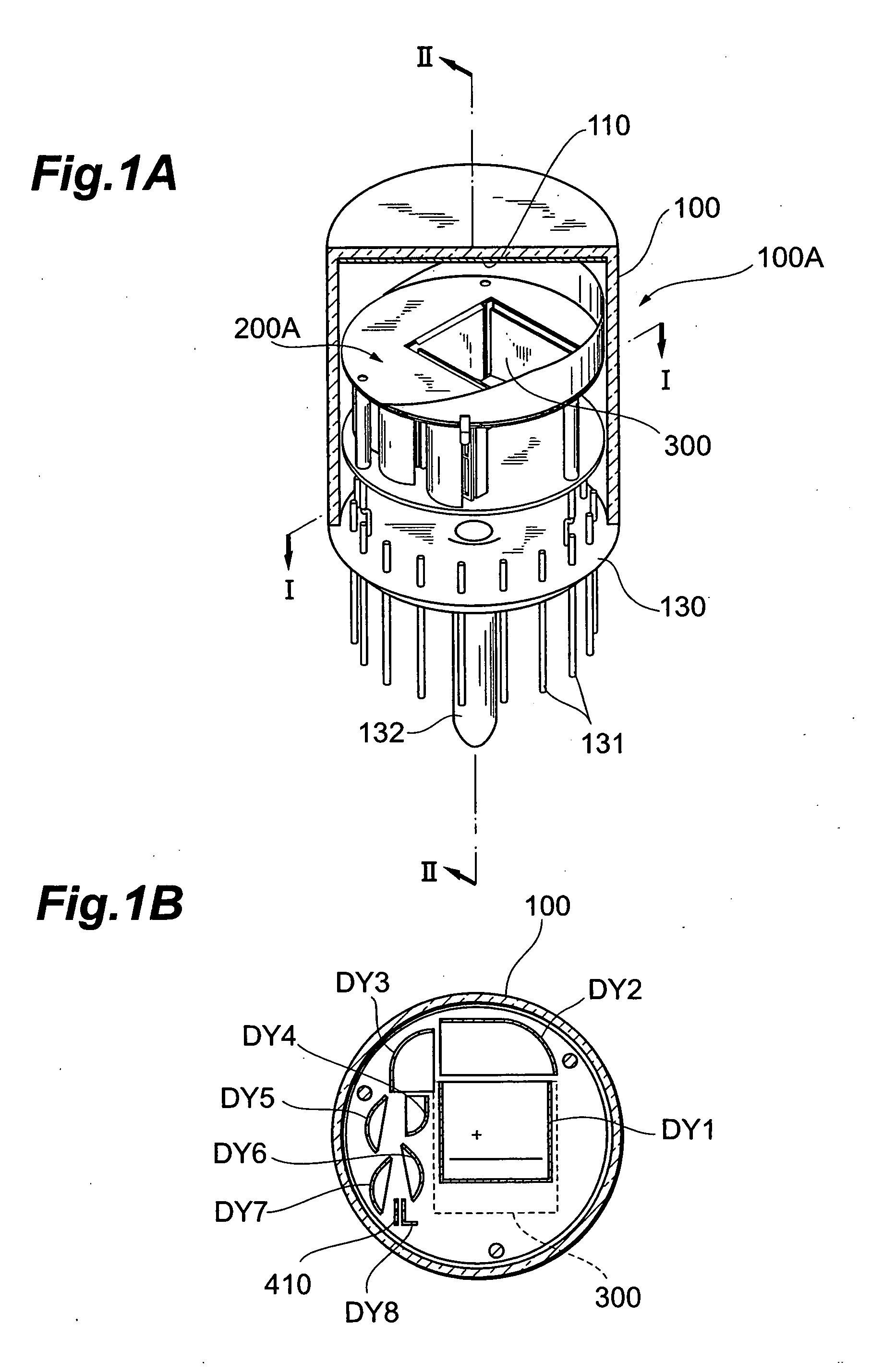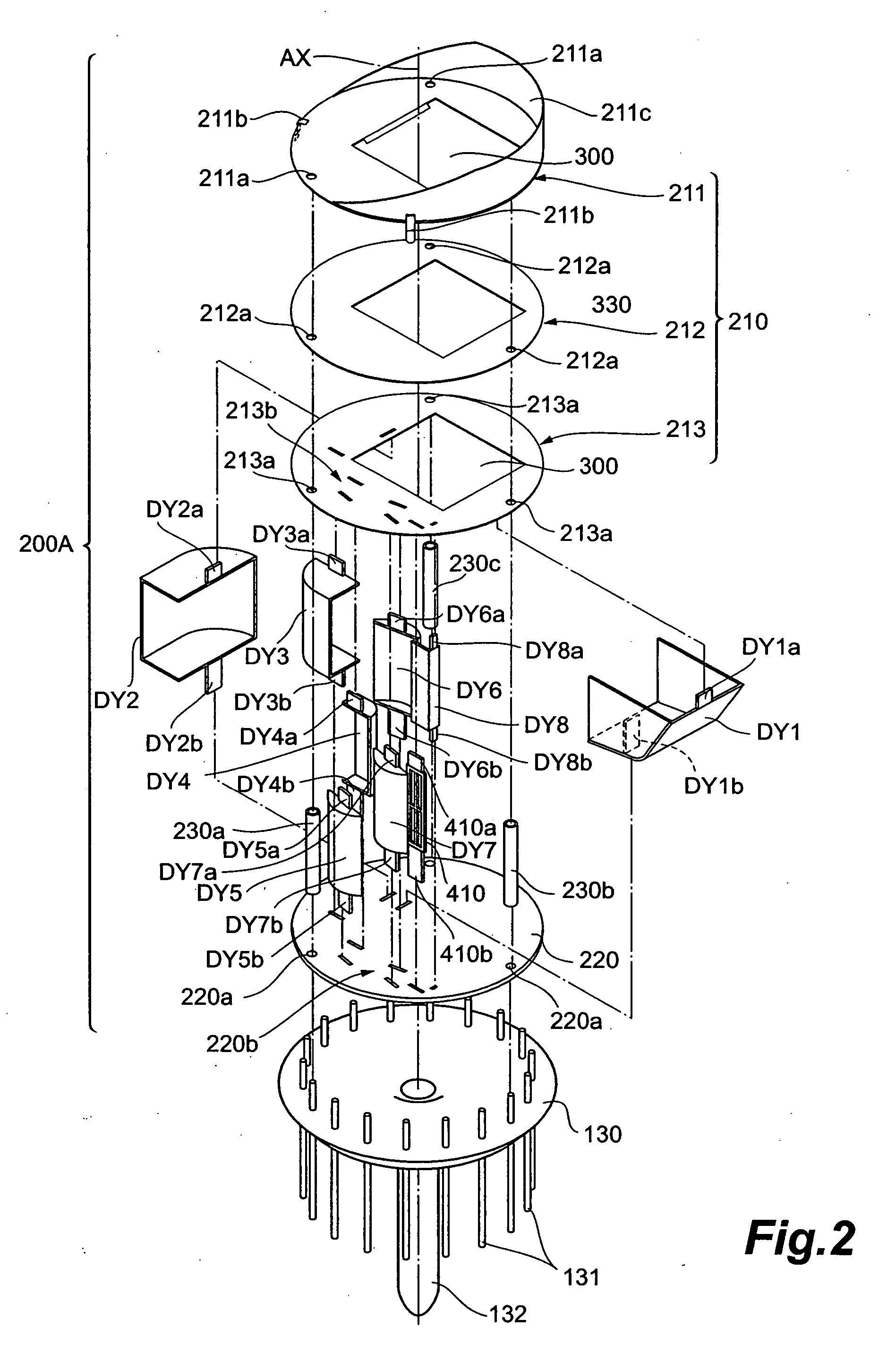Electron multiplier unit and photomultiplier including the same
a technology of electron multiplier and photomultiplier, which is applied in the directions of electron multiplier details, multiplier electrode arrangement, electric discharge tube, etc., can solve the problems of weight of detector parts and impediment to reduce weight and size of apparatus, and achieve the effect of adequate gain and efficient housing
- Summary
- Abstract
- Description
- Claims
- Application Information
AI Technical Summary
Benefits of technology
Problems solved by technology
Method used
Image
Examples
first embodiment
[0047]FIG. 2 is an assembling process chart for explaining the structure of the electron multiplier unit 200A shown in FIG. 1A (the electron multiplier unit according to the present invention).
[0048] As shown in FIG. 2, the electron multiplier unit 200A is comprised of a first support member 210 provided with an inlet aperture 300 for letting the photoelectrons from the cathode 110 pass; a second support member220 arranged in parallel with the first support member 210 along the tube axis AX; first to seventh dynodes DY1-DY7, an anode 410, and a reflection type dynode DY8 placed in the space between these first and second support members 210, 220 and each held by the first and second support members 210, 220. The distance between the first and second support members 210, 220 is defined by hollow ceramic pipes 230a to 230c. The first dynode DY1 is provided with an upper fixing piece DY1a and a lower fixing piece DY1b so as to be held by the first and second support members 210, 220. S...
second embodiment
[0078]FIG. 12A is a perspective view showing a structure of a grid type dynode unit 500 applicable as a part of the electron multiplier unit according to the present invention (the electron multiplier unit according to the present invention). FIG. 12B is a sectional view of the grid type dynode unit 500 along line IV-IV in FIG. 12A. The dynode unit 500 shown in FIGS. 12A and 12B has a multi-stage configuration of grid type dynodes, but may have a multi-stage configuration of mesh type dynodes.
[0079] As shown in FIGS. 12A and 12B, the grid type dynode unit 500 is composed of a focusing electrode plate 430, dynode plates 510 set at predetermined intervals by ceramic spacers 520 each made of an insulating material, and an anode plate 410.
[0080] Each of the focusing electrode plate 430 and the anode plate 410 is provided with an upper fixing piece 500a. Each of the focusing electrode plate 430, dynode plates 510, and anode plate is provided with a lower fixing piece 500b to be electric...
PUM
 Login to View More
Login to View More Abstract
Description
Claims
Application Information
 Login to View More
Login to View More - R&D
- Intellectual Property
- Life Sciences
- Materials
- Tech Scout
- Unparalleled Data Quality
- Higher Quality Content
- 60% Fewer Hallucinations
Browse by: Latest US Patents, China's latest patents, Technical Efficacy Thesaurus, Application Domain, Technology Topic, Popular Technical Reports.
© 2025 PatSnap. All rights reserved.Legal|Privacy policy|Modern Slavery Act Transparency Statement|Sitemap|About US| Contact US: help@patsnap.com



